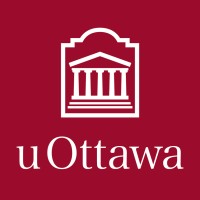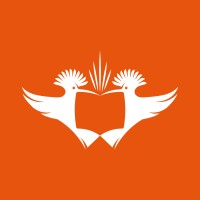
Okanagan College Company Cyber Security Posture
okanagan.bc.caOkanagan College is a public, comprehensive, post-secondary educational institution that was established under the provisions of the College and Institute Act (2004). Okanagan College offers a wide variety of career, continuing education, degree, developmental, trades and technologies, university studies, and vocational programs. The region served by Okanagan College covers 37,750 square kilometres, and extends from Osoyoos and Princeton in the south and west to Mica Creek and Revelstoke in the north and east. Established in 1965, Okanagan Regional College enrolled its first university studies and career transfer students in 1968. In 1989, the mandate of Okanagan College was expanded to provide baccalaureate degrees, in partnership with established universities. During the next two years Okanagan College introduced third and fourth year courses leading to degrees in Arts and in Science in partnership with the University of British Columbia, and in Education and in Nursing in partnership with the University of Victoria. To reflect this new mandate, the name Okanagan University College was adopted in 1992. On March 17, 2004 the Provincial Government announced that OUC would evolve into two new institutions by September 2005 – UBC Okanagan and the new Okanagan College. The new Okanagan College was designated by the Lieutenant Governor in Council as an authorized college under the College and Institute Act on November 26, 2004 and an interim board was appointed..
Okanagan College Company Details
okanagan-college_2
359 employees
3005.0
611
Higher Education
okanagan.bc.ca
Scan still pending
OKA_2357924
In-progress
Between 800 and 900
This score is AI-generated and less favored by cyber insurers, who prefer the TPRM score.
 Okanagan College Global Score
Okanagan College Global Score.png)

Okanagan College Company Scoring based on AI Models
| Model Name | Date | Description | Current Score Difference | Score |
|---|---|---|---|---|
| AVERAGE-Industry | 03-12-2025 | This score represents the average cybersecurity rating of companies already scanned within the same industry. It provides a benchmark to compare an individual company's security posture against its industry peers. | N/A | Between 800 and 900 |
Okanagan College Company Cyber Security News & History
| Entity | Type | Severity | Impact | Seen | Url ID | Details | View |
|---|---|---|---|---|---|---|---|
| Okanagan College | Cyber Attack | 100 | 5 | 01/2023 | OKA21913123 | Link | |
Rankiteo Explanation : Attack threatening the organization's existenceDescription: Okanagan College fell victim to a cyber attack after which around 16,000 students and 1,200 staff were unable to access campus network services. The systems that were impacted included Internet, wireless and networks, Internal student and staff information systems, Phone lines including Internet-based phones, and campus security. | |||||||
Okanagan College Company Subsidiaries

Okanagan College is a public, comprehensive, post-secondary educational institution that was established under the provisions of the College and Institute Act (2004). Okanagan College offers a wide variety of career, continuing education, degree, developmental, trades and technologies, university studies, and vocational programs. The region served by Okanagan College covers 37,750 square kilometres, and extends from Osoyoos and Princeton in the south and west to Mica Creek and Revelstoke in the north and east. Established in 1965, Okanagan Regional College enrolled its first university studies and career transfer students in 1968. In 1989, the mandate of Okanagan College was expanded to provide baccalaureate degrees, in partnership with established universities. During the next two years Okanagan College introduced third and fourth year courses leading to degrees in Arts and in Science in partnership with the University of British Columbia, and in Education and in Nursing in partnership with the University of Victoria. To reflect this new mandate, the name Okanagan University College was adopted in 1992. On March 17, 2004 the Provincial Government announced that OUC would evolve into two new institutions by September 2005 – UBC Okanagan and the new Okanagan College. The new Okanagan College was designated by the Lieutenant Governor in Council as an authorized college under the College and Institute Act on November 26, 2004 and an interim board was appointed..
Access Data Using Our API

Get company history
.png)
Okanagan College Cyber Security News
Update: Related to the cyber-incident, Jan. 2023
It is now abundantly clear that the intended purpose of the attack was to both steal data and encrypt our IT infrastructure to extort the ...
Sensitive data stolen in Okanagan College cyber attack now posted to dark web, ransomware group claims
Sensitive data stolen in Okanagan College cyber attack now posted to dark web, ransomware group claims · College alerted authorities to the ...
Okanagan College continues to recover from cyberattack
More systems are again operational and available to students and staff after a cyberattack on Okanagan College's network earlier this month.
Okanagan College warns of potential privacy breach after cyber attack
Nearly 16000 students and 1200 staff at Okanagan College are still unable to access campus network services after a cyber attack earlier ...
Ransomware group follows through on threat and publishes Okanagan College information - Kelowna News
An international ransomware group has now published a large batch of data on the darkweb claimed to have been obtained through a cyberattack ...
Hackers follow through with threats to release Okanagan College data
The group, Vice Society, illegally obtained the information on Jan. 9. The data included everything from passwords, to social security numbers, ...
Over 20 courses and programs at Okanagan College qualify for StrongerBC future skills grant
Twenty programs at Okanagan College are eligible for the grant and registration is open in programs in health care, trades, business and more.
Okanagan College hijackers identified; promise four days until data dump
An international criminal gang that specializes in cyberattacks on educational institutions appears to be holding data acquired in a ...
Personal data of 26M LAUSD students put up for sale on hacker forum
Data containing 26.4 million student records is allegedly listed for sale by a BreachForums user. Image by Cybernews. According to the US ...

Okanagan College Similar Companies

Facultad de Ciencias Agropecuarias UNC
La actual Facultad de Ciencias Agropecuarias se creó el 21 de marzo de 1966 según Ordenanza N° 4/66 del H.C.S. con la denominación de Instituto de Ciencias Agronómicas, dependiendo directamente del Rector y del Consejo Superior. Se trata de una Institución de corta vida, respecto a otras Faculta

Vanderbilt University
Vanderbilt University is a top-ranked teaching and research university in Nashville, Tennessee. Powered by collaboration. Follow Vanderbilt on Facebook, Twitter, TikTok and Instagram @VanderbiltU. See more Vanderbilt social media at https://social.vanderbilt.edu/ Located in Nashville, Tenn., and o

University of Ottawa
À l’Université d’Ottawa, la plus grande université bilingue au monde, la population étudiante peut choisir d’étudier en français, en anglais, ou dans les deux langues. Située au cœur de la capitale du Canada, pays du G8, notre université jouit d’un accès direct aux plus grandes institutions du pays.

Columbia University
For more than 250 years, Columbia has been a leader in higher education in the nation and around the world. At the core of our wide range of academic inquiry is the commitment to attract and engage the best minds in pursuit of greater human understanding, pioneering new discoveries and service to so

University of Wisconsin-Madison
In achievement and prestige, the University of Wisconsin–Madison has long been recognized as one of America's great universities. A public, land-grant institution, UW–Madison offers a complete spectrum of liberal arts studies, professional programs and student activities. Spanning 936 acres along th

University of Johannesburg
It is the vision of the University of Johannesburg to be a premier, embracing, African city university offering a mix of vocational and academic programmes that advances freedom, democracy, equality and human dignity as high ideals of humanity through distinguished scholarship, excellence in teachin

Frequently Asked Questions (FAQ) on Cybersecurity Incidents
Okanagan College CyberSecurity History Information
Total Incidents: According to Rankiteo, Okanagan College has faced 1 incidents in the past.
Incident Types: The types of cybersecurity incidents that have occurred include ['Cyber Attack'].
Total Financial Loss: The total financial loss from these incidents is estimated to be {total_financial_loss}.
Cybersecurity Posture: The company's overall cybersecurity posture is described as Okanagan College is a public, comprehensive, post-secondary educational institution that was established under the provisions of the College and Institute Act (2004). Okanagan College offers a wide variety of career, continuing education, degree, developmental, trades and technologies, university studies, and vocational programs. The region served by Okanagan College covers 37,750 square kilometres, and extends from Osoyoos and Princeton in the south and west to Mica Creek and Revelstoke in the north and east. Established in 1965, Okanagan Regional College enrolled its first university studies and career transfer students in 1968. In 1989, the mandate of Okanagan College was expanded to provide baccalaureate degrees, in partnership with established universities. During the next two years Okanagan College introduced third and fourth year courses leading to degrees in Arts and in Science in partnership with the University of British Columbia, and in Education and in Nursing in partnership with the University of Victoria. To reflect this new mandate, the name Okanagan University College was adopted in 1992. On March 17, 2004 the Provincial Government announced that OUC would evolve into two new institutions by September 2005 – UBC Okanagan and the new Okanagan College. The new Okanagan College was designated by the Lieutenant Governor in Council as an authorized college under the College and Institute Act on November 26, 2004 and an interim board was appointed...
Detection and Response: The company detects and responds to cybersecurity incidents through {description_of_detection_and_response_process}.
Incident Details
Incident 1: Ransomware Attack
Title: {Incident_Title}
Description: {Brief_description_of_the_incident}
Date Detected: {Detection_Date}
Date Publicly Disclosed: {Disclosure_Date}
Date Resolved: {Resolution_Date}
Type: {Type_of_Attack}
Attack Vector: {Attack_Vector}
Vulnerability Exploited: {Vulnerability}
Threat Actor: {Threat_Actor}
Motivation: {Motivation}
Incident 2: Data Breach
Title: {Incident_Title}
Description: {Brief_description_of_the_incident}
Date Detected: {Detection_Date}
Date Publicly Disclosed: {Disclosure_Date}
Date Resolved: {Resolution_Date}
Type: {Type_of_Attack}
Attack Vector: {Attack_Vector}
Vulnerability Exploited: {Vulnerability}
Threat Actor: {Threat_Actor}
Motivation: {Motivation}
Common Attack Types: As of now, the company has not encountered any reported incidents involving common cyberattacks.
Identification of Attack Vectors: The company identifies the attack vectors used in incidents through {description_of_identification_process}.
Impact of the Incidents
Incident 1: Ransomware Attack
Financial Loss: {Financial_Loss}
Data Compromised: {Data_Compromised}
Systems Affected: {Systems_Affected}
Downtime: {Downtime}
Operational Impact: {Operational_Impact}
Conversion Rate Impact: {Conversion_Rate_Impact}
Revenue Loss: {Revenue_Loss}
Customer Complaints: {Customer_Complaints}
Brand Reputation Impact: {Brand_Reputation_Impact}
Legal Liabilities: {Legal_Liabilities}
Identity Theft Risk: {Identity_Theft_Risk}
Payment Information Risk: {Payment_Information_Risk}
Incident 2: Data Breach
Financial Loss: {Financial_Loss}
Data Compromised: {Data_Compromised}
Systems Affected: {Systems_Affected}
Downtime: {Downtime}
Operational Impact: {Operational_Impact}
Conversion Rate Impact: {Conversion_Rate_Impact}
Revenue Loss: {Revenue_Loss}
Customer Complaints: {Customer_Complaints}
Brand Reputation Impact: {Brand_Reputation_Impact}
Legal Liabilities: {Legal_Liabilities}
Identity Theft Risk: {Identity_Theft_Risk}
Payment Information Risk: {Payment_Information_Risk}
Average Financial Loss: The average financial loss per incident is {average_financial_loss}.
Commonly Compromised Data Types: The types of data most commonly compromised in incidents are {list_of_commonly_compromised_data_types}.
Incident 1: Ransomware Attack
Entity Name: {Entity_Name}
Entity Type: {Entity_Type}
Industry: {Industry}
Location: {Location}
Size: {Size}
Customers Affected: {Customers_Affected}
Incident 2: Data Breach
Entity Name: {Entity_Name}
Entity Type: {Entity_Type}
Industry: {Industry}
Location: {Location}
Size: {Size}
Customers Affected: {Customers_Affected}
Response to the Incidents
Incident 1: Ransomware Attack
Incident Response Plan Activated: {Yes/No}
Third Party Assistance: {Yes/No}
Law Enforcement Notified: {Yes/No}
Containment Measures: {Containment_Measures}
Remediation Measures: {Remediation_Measures}
Recovery Measures: {Recovery_Measures}
Communication Strategy: {Communication_Strategy}
Adaptive Behavioral WAF: {Adaptive_Behavioral_WAF}
On-Demand Scrubbing Services: {On_Demand_Scrubbing_Services}
Network Segmentation: {Network_Segmentation}
Enhanced Monitoring: {Enhanced_Monitoring}
Incident 2: Data Breach
Incident Response Plan Activated: {Yes/No}
Third Party Assistance: {Yes/No}
Law Enforcement Notified: {Yes/No}
Containment Measures: {Containment_Measures}
Remediation Measures: {Remediation_Measures}
Recovery Measures: {Recovery_Measures}
Communication Strategy: {Communication_Strategy}
Adaptive Behavioral WAF: {Adaptive_Behavioral_WAF}
On-Demand Scrubbing Services: {On_Demand_Scrubbing_Services}
Network Segmentation: {Network_Segmentation}
Enhanced Monitoring: {Enhanced_Monitoring}
Incident Response Plan: The company's incident response plan is described as {description_of_incident_response_plan}.
Third-Party Assistance: The company involves third-party assistance in incident response through {description_of_third_party_involvement}.
Data Breach Information
Incident 2: Data Breach
Type of Data Compromised: {Type_of_Data}
Number of Records Exposed: {Number_of_Records}
Sensitivity of Data: {Sensitivity_of_Data}
Data Exfiltration: {Yes/No}
Data Encryption: {Yes/No}
File Types Exposed: {File_Types}
Personally Identifiable Information: {Yes/No}
Prevention of Data Exfiltration: The company takes the following measures to prevent data exfiltration: {description_of_prevention_measures}.
Handling of PII Incidents: The company handles incidents involving personally identifiable information (PII) through {description_of_handling_process}.
Ransomware Information
Incident 1: Ransomware Attack
Ransom Demanded: {Ransom_Amount}
Ransom Paid: {Ransom_Paid}
Ransomware Strain: {Ransomware_Strain}
Data Encryption: {Yes/No}
Data Exfiltration: {Yes/No}
Ransom Payment Policy: The company's policy on paying ransoms in ransomware incidents is described as {description_of_ransom_payment_policy}.
Data Recovery from Ransomware: The company recovers data encrypted by ransomware through {description_of_data_recovery_process}.
Regulatory Compliance
Incident 1: Ransomware Attack
Regulations Violated: {Regulations_Violated}
Fines Imposed: {Fines_Imposed}
Legal Actions: {Legal_Actions}
Regulatory Notifications: {Regulatory_Notifications}
Incident 2: Data Breach
Regulations Violated: {Regulations_Violated}
Fines Imposed: {Fines_Imposed}
Legal Actions: {Legal_Actions}
Regulatory Notifications: {Regulatory_Notifications}
Regulatory Frameworks: The company complies with the following regulatory frameworks regarding cybersecurity: {list_of_regulatory_frameworks}.
Ensuring Regulatory Compliance: The company ensures compliance with regulatory requirements through {description_of_compliance_measures}.
Lessons Learned and Recommendations
Incident 1: Ransomware Attack
Lessons Learned: {Lessons_Learned}
Incident 2: Data Breach
Lessons Learned: {Lessons_Learned}
Incident 1: Ransomware Attack
Recommendations: {Recommendations}
Incident 2: Data Breach
Recommendations: {Recommendations}
Key Lessons Learned: The key lessons learned from past incidents are {list_of_key_lessons_learned}.
Implemented Recommendations: The company has implemented the following recommendations to improve cybersecurity: {list_of_implemented_recommendations}.
References
Additional Resources: Stakeholders can find additional resources on cybersecurity best practices at {list_of_additional_resources}.
Investigation Status
Incident 1: Ransomware Attack
Investigation Status: {Investigation_Status}
Incident 2: Data Breach
Investigation Status: {Investigation_Status}
Communication of Investigation Status: The company communicates the status of incident investigations to stakeholders through {description_of_communication_process}.
Stakeholder and Customer Advisories
Incident 1: Ransomware Attack
Stakeholder Advisories: {Stakeholder_Advisories}
Customer Advisories: {Customer_Advisories}
Incident 2: Data Breach
Stakeholder Advisories: {Stakeholder_Advisories}
Customer Advisories: {Customer_Advisories}
Advisories Provided: The company provides the following advisories to stakeholders and customers following an incident: {description_of_advisories_provided}.
Initial Access Broker
Incident 1: Ransomware Attack
Entry Point: {Entry_Point}
Reconnaissance Period: {Reconnaissance_Period}
Backdoors Established: {Backdoors_Established}
High Value Targets: {High_Value_Targets}
Data Sold on Dark Web: {Yes/No}
Incident 2: Data Breach
Entry Point: {Entry_Point}
Reconnaissance Period: {Reconnaissance_Period}
Backdoors Established: {Backdoors_Established}
High Value Targets: {High_Value_Targets}
Data Sold on Dark Web: {Yes/No}
Monitoring and Mitigation of Initial Access Brokers: The company monitors and mitigates the activities of initial access brokers through {description_of_monitoring_and_mitigation_measures}.
Post-Incident Analysis
Incident 1: Ransomware Attack
Root Causes: {Root_Causes}
Corrective Actions: {Corrective_Actions}
Incident 2: Data Breach
Root Causes: {Root_Causes}
Corrective Actions: {Corrective_Actions}
Post-Incident Analysis Process: The company's process for conducting post-incident analysis is described as {description_of_post_incident_analysis_process}.
Corrective Actions Taken: The company has taken the following corrective actions based on post-incident analysis: {list_of_corrective_actions_taken}.
Additional Questions
General Information
Ransom Payment History: The company has {paid/not_paid} ransoms in the past.
Last Ransom Demanded: The amount of the last ransom demanded was {last_ransom_amount}.
Last Attacking Group: The attacking group in the last incident was {last_attacking_group}.
Incident Details
Most Recent Incident Detected: The most recent incident detected was on {most_recent_incident_detected_date}.
Most Recent Incident Publicly Disclosed: The most recent incident publicly disclosed was on {most_recent_incident_publicly_disclosed_date}.
Most Recent Incident Resolved: The most recent incident resolved was on {most_recent_incident_resolved_date}.
Impact of the Incidents
Highest Financial Loss: The highest financial loss from an incident was {highest_financial_loss}.
Most Significant Data Compromised: The most significant data compromised in an incident was {most_significant_data_compromised}.
Most Significant System Affected: The most significant system affected in an incident was {most_significant_system_affected}.
Response to the Incidents
Third-Party Assistance in Most Recent Incident: The third-party assistance involved in the most recent incident was {third_party_assistance_in_most_recent_incident}.
Containment Measures in Most Recent Incident: The containment measures taken in the most recent incident were {containment_measures_in_most_recent_incident}.
Data Breach Information
Most Sensitive Data Compromised: The most sensitive data compromised in a breach was {most_sensitive_data_compromised}.
Number of Records Exposed: The number of records exposed in the most significant breach was {number_of_records_exposed}.
Ransomware Information
Highest Ransom Demanded: The highest ransom demanded in a ransomware incident was {highest_ransom_demanded}.
Highest Ransom Paid: The highest ransom paid in a ransomware incident was {highest_ransom_paid}.
Regulatory Compliance
Highest Fine Imposed: The highest fine imposed for a regulatory violation was {highest_fine_imposed}.
Most Significant Legal Action: The most significant legal action taken for a regulatory violation was {most_significant_legal_action}.
Lessons Learned and Recommendations
Most Significant Lesson Learned: The most significant lesson learned from past incidents was {most_significant_lesson_learned}.
Most Significant Recommendation Implemented: The most significant recommendation implemented to improve cybersecurity was {most_significant_recommendation_implemented}.
References
Most Recent Source: The most recent source of information about an incident is {most_recent_source}.
Most Recent URL for Additional Resources: The most recent URL for additional resources on cybersecurity best practices is {most_recent_url}.
Investigation Status
Current Status of Most Recent Investigation: The current status of the most recent investigation is {current_status_of_most_recent_investigation}.
Stakeholder and Customer Advisories
Most Recent Stakeholder Advisory: The most recent stakeholder advisory issued was {most_recent_stakeholder_advisory}.
Most Recent Customer Advisory: The most recent customer advisory issued was {most_recent_customer_advisory}.
Initial Access Broker
Most Recent Entry Point: The most recent entry point used by an initial access broker was {most_recent_entry_point}.
Most Recent Reconnaissance Period: The most recent reconnaissance period for an incident was {most_recent_reconnaissance_period}.
Post-Incident Analysis
Most Significant Root Cause: The most significant root cause identified in post-incident analysis was {most_significant_root_cause}.
Most Significant Corrective Action: The most significant corrective action taken based on post-incident analysis was {most_significant_corrective_action}.
What Do We Measure?
















Every week, Rankiteo analyzes billions of signals to give organizations a sharper, faster view of emerging risks. With deeper, more actionable intelligence at their fingertips, security teams can outpace threat actors, respond instantly to Zero-Day attacks, and dramatically shrink their risk exposure window.
These are some of the factors we use to calculate the overall score:
Identify exposed access points, detect misconfigured SSL certificates, and uncover vulnerabilities across the network infrastructure.
Gain visibility into the software components used within an organization to detect vulnerabilities, manage risk, and ensure supply chain security.
Monitor and manage all IT assets and their configurations to ensure accurate, real-time visibility across the company's technology environment.
Leverage real-time insights on active threats, malware campaigns, and emerging vulnerabilities to proactively defend against evolving cyberattacks.




